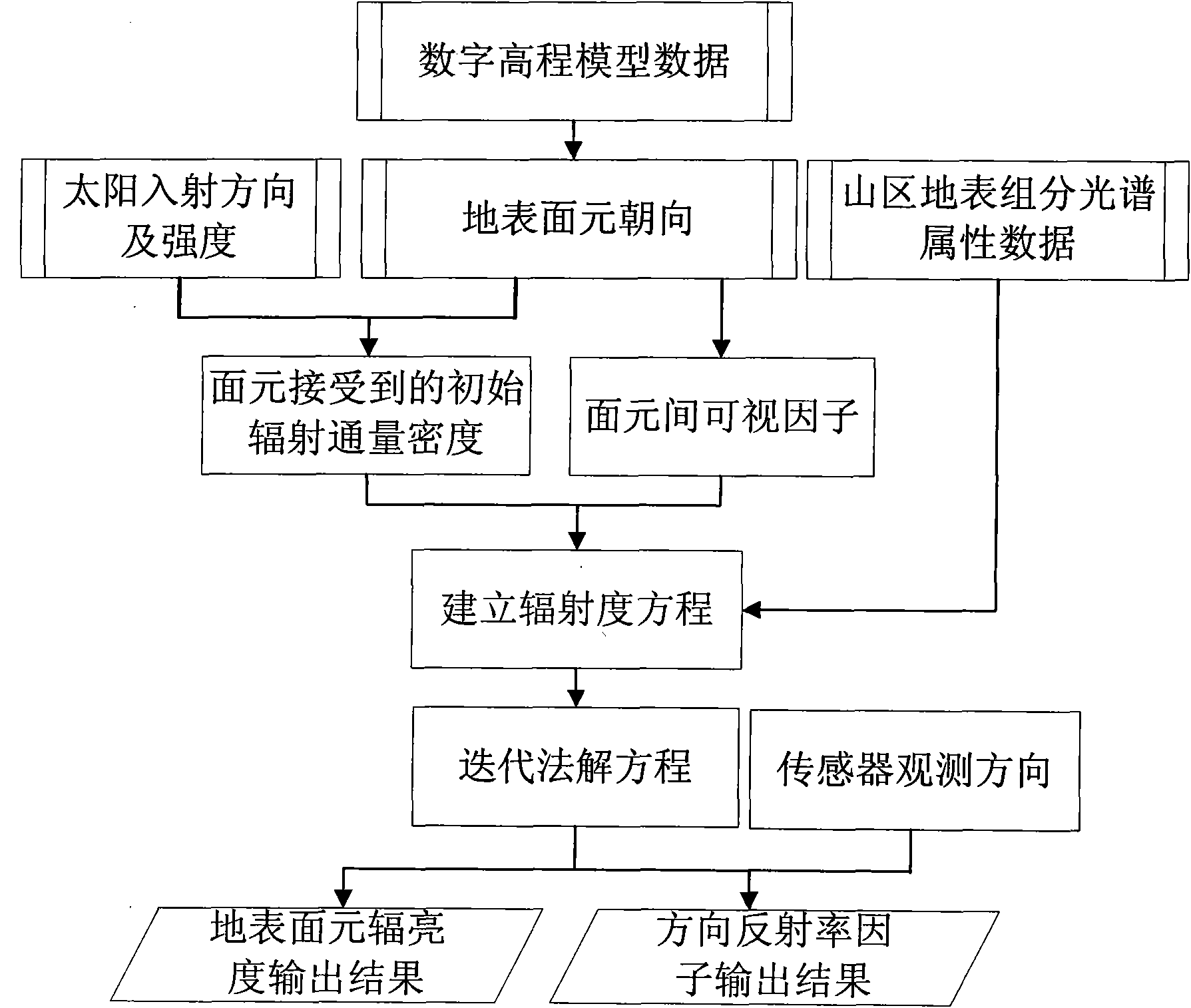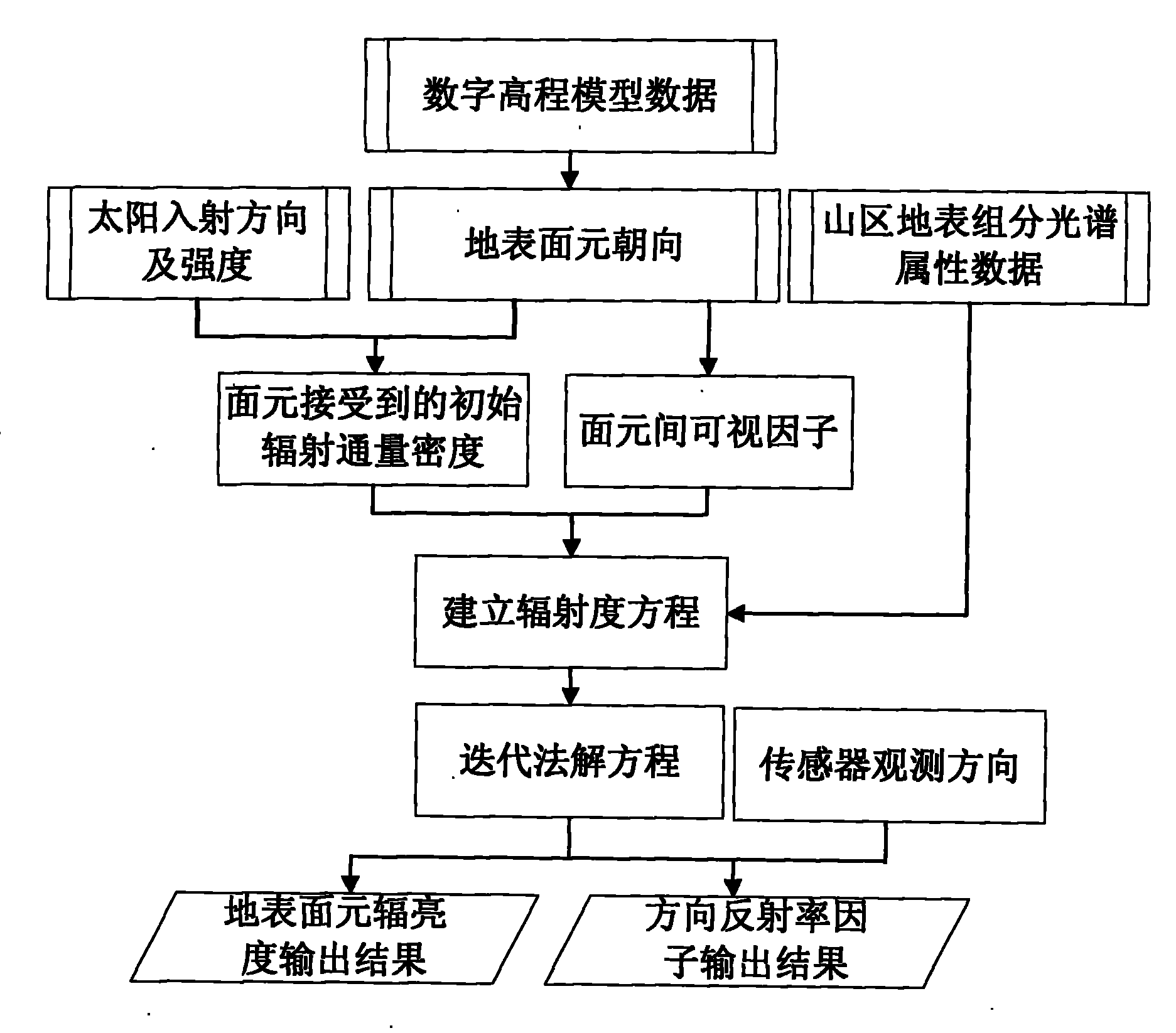Radiation intensity-based method for simulating radiation transfer of complex terrain area
A technology of complex terrain and radiation transmission, applied in the field of remote sensing imaging simulation, it can solve the problems of few parameters, poor applicability, affecting the extraction of remote sensing image information in mountainous areas, etc., and achieve the effect of accurate simulation and calculation
- Summary
- Abstract
- Description
- Claims
- Application Information
AI Technical Summary
Problems solved by technology
Method used
Image
Examples
Embodiment Construction
[0045] Taking the remote sensing scene simulation process in the Qulong area of Tibet as an example, as follows: figure 1 Shown, the concrete implementation method of the present invention is as follows:
[0046] (1) Input the digital elevation model of the study area, calculate the orientation of surface grid elements, and prepare data.
[0047] A digital elevation model with a ground resolution of 30m and surface albedo data in the Qulong area of Tibet is used. The simulation calculation time is set at 10:6:56 am on April 3, 2002, and the geographical coordinates of the center of the area are 29.98°N, 36.37°E. According to the pixel coordinate information provided by the digital elevation model data, calculate the normal vector of the vector formed by the two adjacent sides of the surface grid surface element, determine the zenith angle and azimuth angle of the normal vector, and then obtain the surface element's towards.
[0048] (2) Input the data such as the incide...
PUM
 Login to View More
Login to View More Abstract
Description
Claims
Application Information
 Login to View More
Login to View More - R&D
- Intellectual Property
- Life Sciences
- Materials
- Tech Scout
- Unparalleled Data Quality
- Higher Quality Content
- 60% Fewer Hallucinations
Browse by: Latest US Patents, China's latest patents, Technical Efficacy Thesaurus, Application Domain, Technology Topic, Popular Technical Reports.
© 2025 PatSnap. All rights reserved.Legal|Privacy policy|Modern Slavery Act Transparency Statement|Sitemap|About US| Contact US: help@patsnap.com



